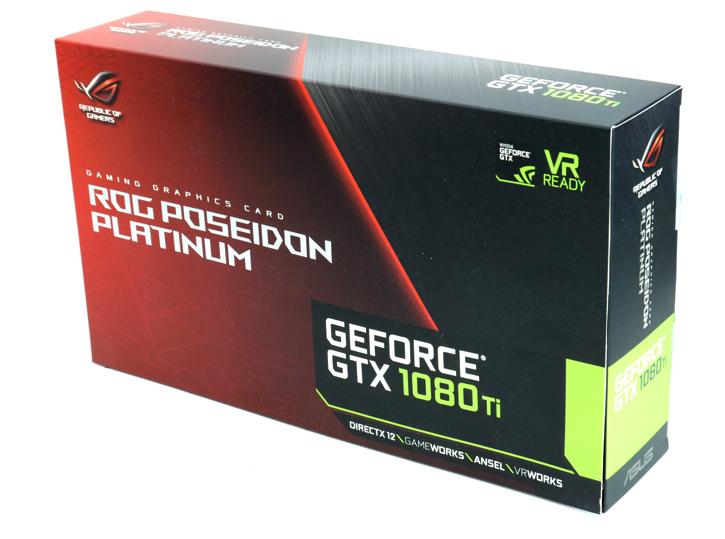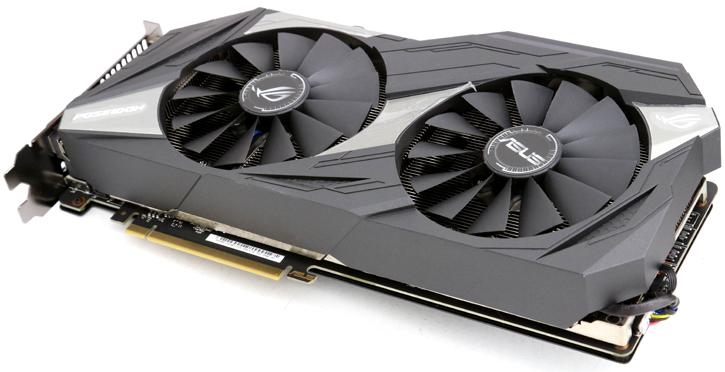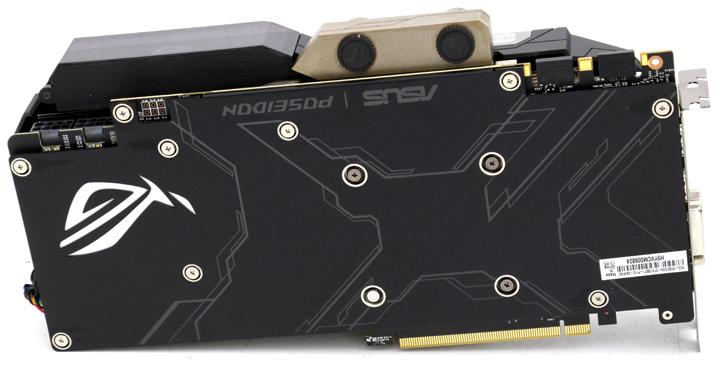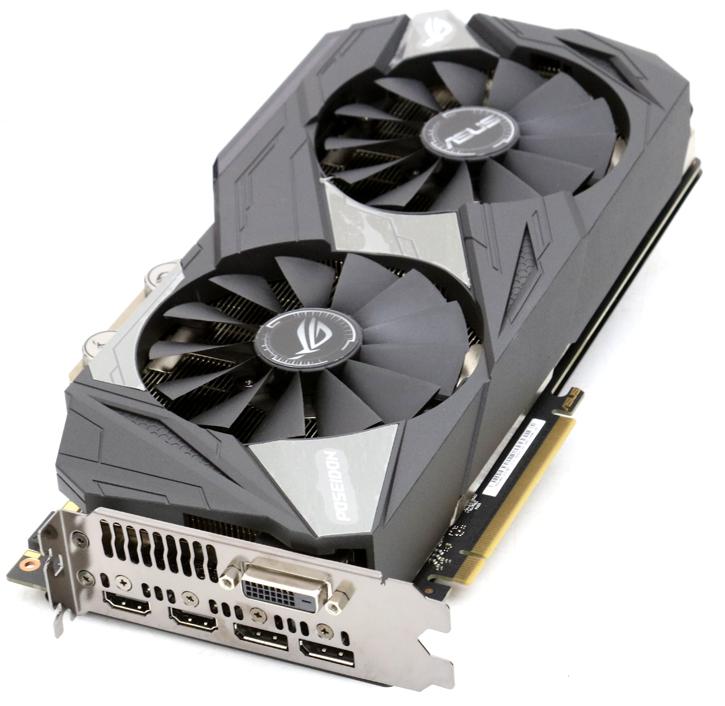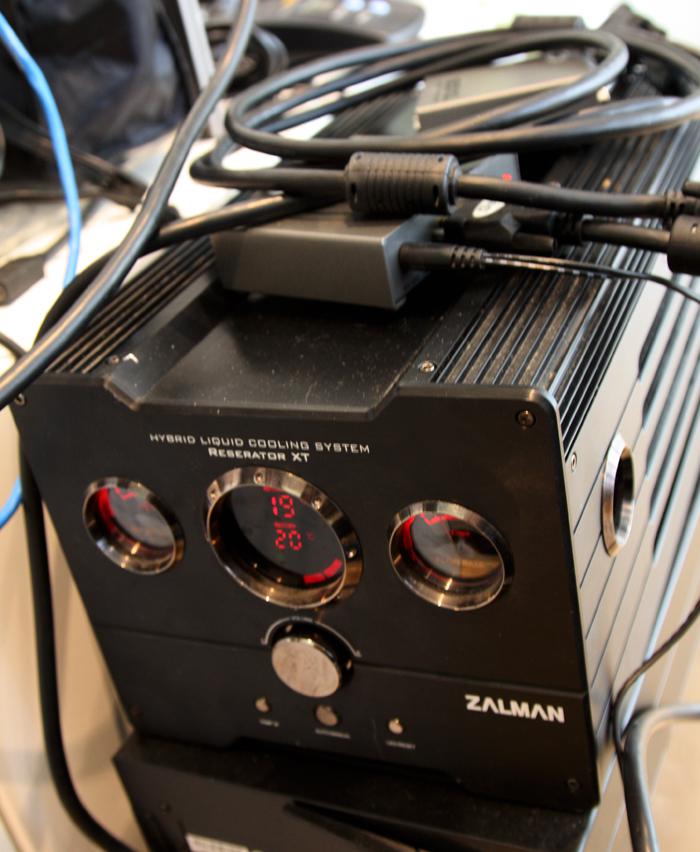Product Showcase
Product Showcase
Let's start with our photo-shoot. A few pages that show the ins and outs with photos, all taken with an in-house photo-shoot of course. Above packaging.
The Poseidon is available at roughly 949 euros under the ROG branding. The card has very nice looks with that traditional ASUS ROG feel and also comes with a mirror LED (we'll show you that later) lighting. The card is based upon a nice matte dark PCB and gets 10 phases + 2 for memory - and uses two power headers (8-pin) for a little more overclocking headroom. We'll disassemble the card and look into the power stages in a few pages though.
As board partners are allowed to release the 1080 Ti model cards in their own configurations you will see many versions, mostly based on customized PCBs/components and the obviously mandatory different cooling solutions. The Poseidon has nice clocks and a backplate, all quite impressive as well. The card has default clock frequency of 1708 MHz (boost) / 1594 (base) MHz with 11 GB GDDR5X / 11,010 MHz effective data-rate on the memory. That is a little more conservative compared to the other big gun brands. Still, any different is easily tweaked of course and if you sue liquid cooling, throttling and power-limiters hardly kick in bringing you some extra perf.
Looking at the rear side you'll see the ROG designed backplate. The backplate lacks proper vents, but with liquid cooling honestly that is no big deal. The card itself is triple slot solution. With only 2-way SLI available these days, the size got less important we feel, so we are okay with that. The cooling system is based on a 3x fan system. On air on low-load situations the fans do not spin. Thus up-to roughly ~60 Degrees C the fans won't even spin. On air the card reacahed 75 Degrees C.
On liquid cooling though, this card remains 100% passive and thus is in-audible with temps at just over 50 Degrees C. The card is ~29cm in length with the cooler included. DirectCU H2O is a hybrid thermal solution that combines the vapor chamber and water channel with standard G1/4- inch threaded fittings to accommodate existing liquid cooling equipment. With liquid, DirectCU H2O achieves up to 2 times (30°C) lower temperatures and thus you will hover in that 50 Degree C range under full GPU load (with proper liquid cooling).
The card will offer five display connectors; you'll spot two DisplayPort connectors, two HDMI connector and a DVI connector. That does mean there is little ventilation available as rear exhaust. DisplayPort is 1.2 certified and DP 1.3/1.4 Ready, enabling support for 4K displays at 120Hz, 5K displays at 60Hz, and 8K displays at 60Hz (using two cables). The GTX 1080 Ti display pipeline supports HDR gaming, as well as video encoding and decoding. New to Pascal is HDR Video (4K@60 10/12b HEVC Decode), HDR Record/Stream (4K@60 10b HEVC Encode), and HDR Interface Support (DP 1.4). You can also see a button, that's for heavy duty overclocking, once pressed the fans kick into high RPM.
We'll be connecting the Poseidon to a Zalman Reserator XT unit. It will provide more than enough cooling and will allow temperatures to hover in the ~50 Degrees C range with the GPU under flat-out stress/utilization.

